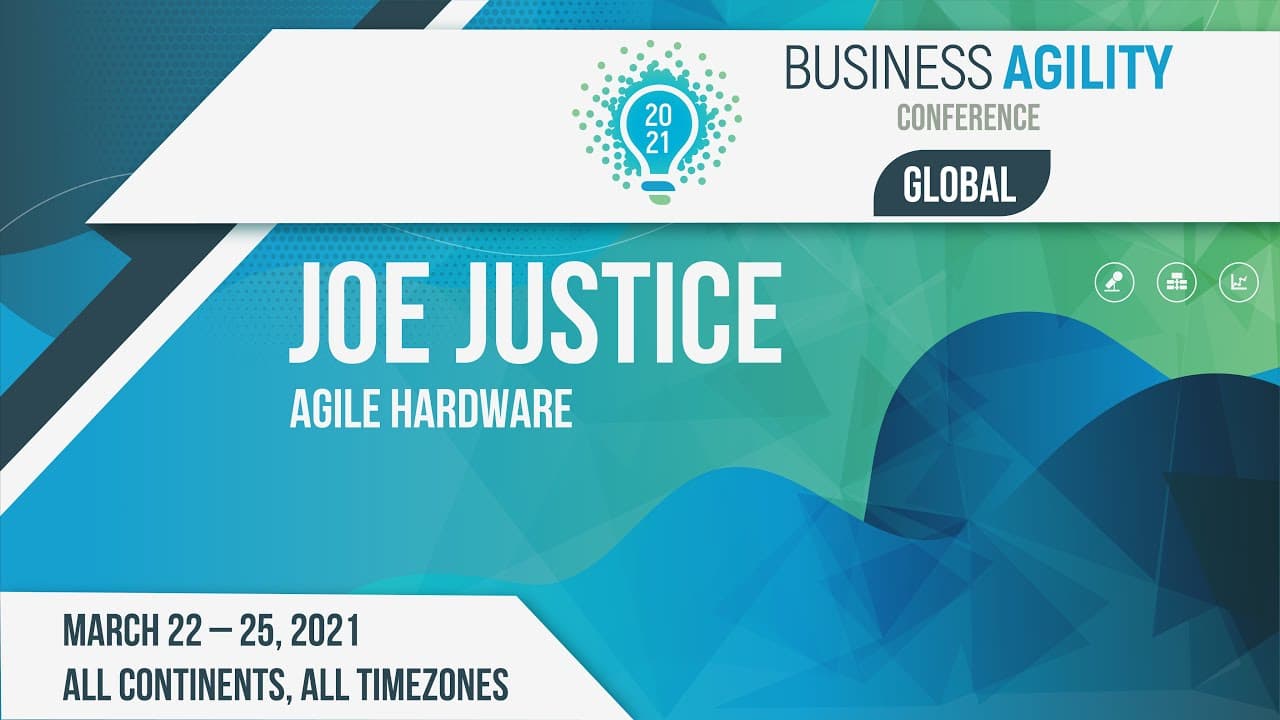Speaker: What an honor to be with this international group. I'm truly astounded at how cool this is. COVID-19 has been incredibly disruptive, but one of the best parts is how globally connected it has made us. I've been reading the chat window, seeing all the locations and cities people are dialing in from—some familiar names, people I know and love. It’s phenomenal.
I'll do my very best to provide something interesting, thought-provoking, and hopefully even inspiring. Oh, and I saw a child hoisted through someone’s video chat—pets and children are always invited in everything I do, and I hope for all of us.
What I’ve Learned About Agile Hardware
A lot of us here are agilists. We love short delivery cycles, testing with real customers, and learning what to do next in the cheapest way possible. In software, we can delete the previous version or deploy directly on top of it. But in hardware, how do you embrace agility?
I've spent the last 15 years exploring this question, and today, I'd like to share what I’ve learned so far.
Building Agile Road-Legal Cars
In 2006, I founded a road-legal automotive manufacturing company, legally allowing me to produce vehicles that could be licensed and driven on the road in the U.S. and eventually in Canada and Europe. Today, one of these cars is in Germany, three are in Canada, and the rest are in the U.S. Others have used the open-source plans, potentially building them in additional countries.
We ultimately produced 14 road-legal cars—not a world-changing number, but we proved that you could design, analyze, build, test, and deploy road-legal vehicles in less than a week. We set four world records doing this, which earned me opportunities to work with Toyota, BMW, Volkswagen Group (including Porsche and MAN Truck & Bus), Nissan, and eventually Tesla.
Embracing Disruptive Technologies
In 2012, we became the first automotive manufacturing company to accept digital currency—Bitcoin. At the time, Bitcoin was worth about $8 USD. Recently, it surpassed $60,000. Being open-minded about digital currency turned out to be a very good idea.
This ties into the agile mindset: making it cheap to change your mind and embracing uncertainty for the customer’s advantage. When Tesla recently bought $1.5 billion worth of Bitcoin, I immediately wondered—would BMW, Toyota, or Ford do the same? Of course, they didn’t. This instantly reveals where agile change agents exist in leadership and where traditional roadmaps resist disruption.
Joining Tesla and Scaling Agile in Hardware
In 2020, I joined Tesla at the global headquarters in Fremont, California. My role was to implement Agile at Tesla, working alongside Lean at Tesla, to reduce the cost of making changes and to speed up new product development.
Tesla was already excelling in rapid hardware updates. When I joined, they were making 27 hardware updates per model per week. For context, in most automotive companies, a hardware change is a four-year project, progressing through waterfall phases: supplier verification, pricing, procurement, factory setup, training, and eventual production.
The Financial Viability of Agile in Hardware
It’s clear that agile principles in hardware are financially viable. Tesla’s market capitalization now exceeds the combined value of every other car company. If we compare:
- Toyota: Takes 2.5 to 4 years for a minor model change (e.g., new bumper design and navigation software). Market cap: ~$210B.
- Volkswagen, BMW, Daimler (combined): Minor model changes take ~4 years. Market cap: ~$181B.
- GM, Ford, Fiat-Chrysler (Stellantis) (combined): Slower changes, lower valuation.
- Tesla: Rapid hardware/software updates, continuous deployment. Market cap: >$800B.
Leaders across the industry recognize the need for agility:
- Volkmar Denner (Bosch): Called for all 300,000 Bosch employees to embrace agility.
- Akio Toyoda (Toyota CEO): Says the CEO’s role is to fuel change at the point of execution.
- Herbert Diess (Volkswagen CEO): Asked, “Are we fast enough? If we continue at our current speed, it will be very tough.”
- Elon Musk (Tesla CEO): “Pace of innovation is all that matters in the long run.”
Lessons from Bill Gates on Parallel Execution
When I worked with Bill Gates at Microsoft and later at the Bill & Melinda Gates Foundation, he started every meeting with, “How much of this can we do in parallel?”
That mindset stuck with me. In software, we leverage object-oriented architecture and microservices to enable parallel execution. In vaccine deployment, we applied similar concepts to eradicate diseases like rotavirus. When I transitioned to hardware, I applied the same principles—splitting projects into parallel executable chunks.
This approach mirrors Henrik Kniberg’s Spotify Model, which emphasized autonomous, cross-functional teams working in parallel.
Breaking Hardware Development into Agile Cycles
Traditionally, a car takes five to seven years to design, build, test, and deploy. At Tesla, we achieved 27 changes per week by breaking development into smaller cycles:
- Divide the car into modular, independent components.
- Assign teams to each module with stable interfaces.
- Enable continuous integration and real-time testing.
- Leverage automated feedback loops.
By structuring Tesla around modular, cross-functional teams that operate autonomously, the organization itself becomes agile.
Tesla’s Flat Hierarchy
At Tesla, there are no traditional hierarchies. Elon Musk works on the factory floor, just meters from where I worked. Everyone contributes directly to manufacturing—there are no “thought-only” jobs. If you need resources, you don’t go through layers of approval. You turn to the people around you and ask, “Is this a good idea?” If the answer is yes, you move forward.
Agile Principles in Tesla’s Production
Here’s how Tesla achieves continuous improvement in production:
- Parallel Execution: Teams independently iterate on modules (e.g., heat pump, drive module, interior package).
- Continuous Integration: Automated tests verify changes in real time.
- Cross-Functional Teams: Teams own procurement, testing, software, and hardware development.
- Dynamic Routing: Cars are programmatically forked for experimental changes and merged back based on performance.
Final Thoughts
Agile hardware is not just possible—it’s the future. Tesla, SpaceX, and other cutting-edge companies demonstrate that rapid iteration and parallel execution lead to superior products and massive financial success.
I hope this provides insights into how agility can transform hardware manufacturing. I’d love to hear your thoughts and questions.



